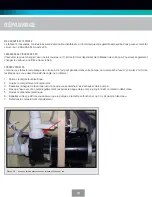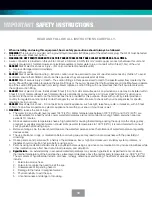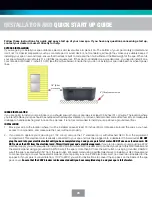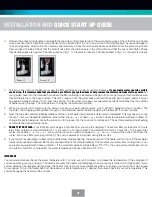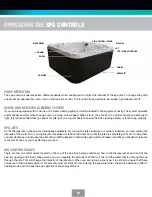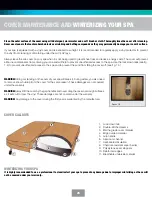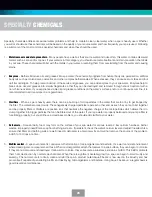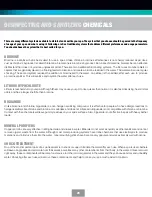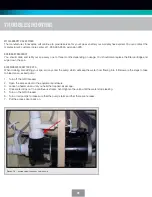
28
Specialty chemicals address occasional water problems and help to maintain clean, clear water when a spa is heavily used. Whether
you will or should use these chemicals will be based on the quality of your source water and how frequently your spa is used. Following
is a summary of the most common specialty chemicals and when they should be used.
1.
Metal removers and stain preventers
– Many people have a well as their source water and quite often, this water contains dissolved
metals such as iron and/or copper. If your water is in this category, you should use metal-treatment and stain-prevention chemicals
in your spa. These chemicals will bind with the metals in your water, preventing them from precipitating from the water and causing
stains.
2.
Enzymes
– Bathers introduce oils and greases into spa water; those normally originate from natural body oils, perspiration, artificial
body oils such as moisturizers, cosmetics and other complex bather wastes. When excessive, they can cause scum lines and foul
up filter cartridges. To help prevent build up of these oils and greases, you can add enzymes to your spa water. Enzymes help to
break down oils and greases into smaller fragments so that they can be destroyed and removed through shock treatment with a
non-chlorine oxidizer. If you experience visible oil and grease conditions on the water’s surface and/or a continuous scum line, it is
recommended to add enzymes on a regular basis.
3.
Clarifiers
– When a spa is heavily used, there can be a build up of microparticles in the water that are too tiny to get trapped by
the filter. The water becomes cloudy. These negatively charged particles repel each other and as such they cannot bind together
and be properly filtered. Clarifiers are positive ions that neutralize the negative charge of the microparticles which allows them to
clump together into bigger particles that can be filtered out of the water. If your spa water is properly balanced and your spa filter is
functioning properly, but you still have a cloudiness problem, you should add clarifier to your water.
4.
Defoamers
– Occasionnally, foam may form on the surface of your spa water for various reasons: low calcium hardness, bather
wastes, improperly rinsed filters, soap from bathing suits, etc. If persistent, check the water’s calcium level and adjust if needed. Also,
ensure that filters and bathing suits are well rinsed. A defoamer is a temporary fix and will not remove the source of the problem.
Add 5 to 10 drops at a time.
5.
Biofilm control
– A spa environment is conducive to the formation of microorganisms and bacteria. It’s a warm and wet environment
where dead organic compounds can thrive. When microorganisms attach themselves to a spa surface, they can begin to colonize
if they are not removed and destroyed. If allowed to colonize, they will secrete a substance known as biofilm. This biofilm protects
them from destruction by normal spa chemicals. When there is significant bacterial growth, a spa can begin to smell musty and
swampy. The normal cure is to drain, clean and refill the spa. A product called Aqua Finesse is now used in the industry and has
proven itself capable of penetrating biofilm and destroying microorganisms and bacteria. Using Aqua Finesse on a regular basis is
good preventive maintenance.
SPECIALTY
CHEMICALS

